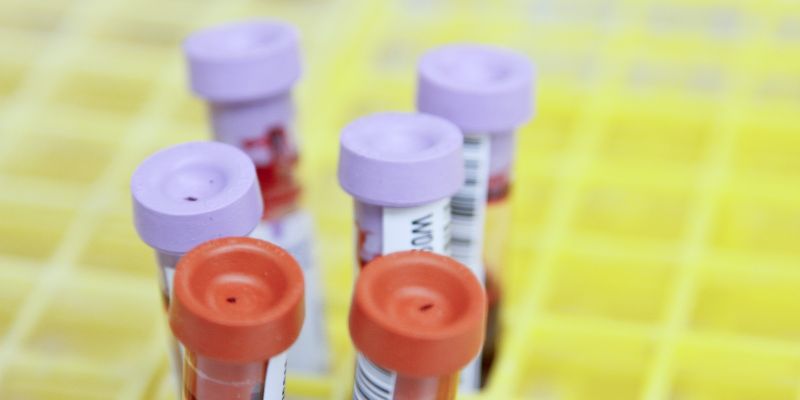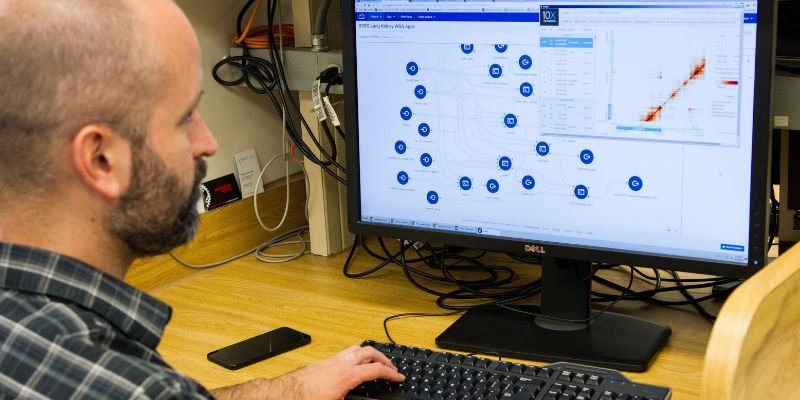Parkinson's disease (PD) has a lot of symptoms, including both motor and non-motor manifestations. The efficacy of therapy for Parkinson's disease (PD) is contingent upon the timely identification of the condition. The potential of smartwatches in facilitating early identification of Parkinson's disease is enhanced by their advanced sensors and continuous monitoring capabilities. This article explores the possibility of smartwatches in the early detection of PD and provides an analysis of the benefits and drawbacks associated with this innovative approach.
Explanation of PD and Its Prevalence

The spectrum of symptoms experienced by individuals with PD, a progressive neurodegenerative disorder impacting the central nervous system, including both motor and non-motor manifestations. The manifestation of tremors, muscular rigidity, and bradykinesia may be attributed to the degeneration of dopaminergic neurons within the cerebral region. PD affects a significant number of individuals worldwide, with elderly individuals being more vulnerable to this condition. The importance of comprehending, identifying, and effectively addressing PD is growing in significance due to the global aging population and the increasing incidence of this condition.
The Role of Technology in Healthcare
Advancements in Wearable Technology
The healthcare system is undergoing ongoing transformation as a result of technological advancements, which are significantly impacting patient care. The proliferation of wearable devices represents a noteworthy advancement in this domain. The growing indispensability of activity trackers and smartwatches is evident. Built-in sensors, including accelerometers, heart rate monitors, and gyroscopes, provide the ongoing monitoring of vital signs and the accumulation of a substantial amount of additional health-related data.
The Impact of Smartwatches on Healthcare
Smartwatches have gained increasing popularity within the realm of wearable technology due to their potential to have a substantial impact on the field of healthcare. These simple devices extend their functionality beyond timekeeping and provide consumers a plethora of supplementary data pertaining to their well-being. Smartwatches provide individuals the opportunity to assume control over their well-being via a multitude of means, including the monitoring of physical exertion and cardiac rhythm, as well as aiding in the tracking of sleep patterns and the management of stress.
Potential for Early Disease Detection
One of the most promising applications of smartwatches in the field of medicine is their ability to assist in the early detection of illnesses. The health data of users is consistently gathered by these devices since they are consistently worn. Smartwatches have the capability to discern alterations in an individual's health condition via the use of advanced algorithms and artificial intelligence (AI) techniques. This skill has potential for valuable applications, such as facilitating the early-stage diagnosis of neurological disorders like PD. The following sections will examine the use of smartwatches in enhancing patient outcomes via the resolution of challenges associated with early detection of Parkinson's disease.
Smartwatches and Parkinson's Disease

How Smartwatches Work in Health Monitoring
The incorporation of several sensors in contemporary smartwatches enables continuous monitoring of a diverse array of physiological indicators. This category of sensors includes movement tracking and other parameters. Smartwatches can provide personalized reference points for health metrics via the ongoing collection and analysis of such data.
Research and Studies on Smartwatch-Based PD Detection
In the future, researchers and medical professionals may potentially use smartwatches as a means of early detection for Parkinson's Disease (PD). Tremors and irregular gait represent a limited subset of the motor symptoms associated with Parkinson's disease (PD) that have been correlated with discernible variations in the data recorded by smartwatches. Through the use of machine learning algorithms, an examination of this data enables the identification of these patterns and facilitates the early detection of PD.
Use of Smartwatches: Positives and Negatives
The use of smartwatches for PD offers several advantages. Continuous monitoring offers a more comprehensive assessment of a patient's well-being compared to sporadic clinical assessments. In addition, smartwatches have the advantage of convenience in long-term monitoring due to their non-intrusive nature and ability to be worn continuously.
However, it is important to consider some limitations. While smartwatches have shown to be beneficial, it is advisable not to only depend on them as a substitute for a comprehensive medical assessment conducted by a qualified healthcare practitioner. The process of clinical assessment is crucial in order to validate findings and mitigate the occurrence of both false positive and false negative outcomes. The acquisition and analysis of health-related data can give rise to ethical concerns pertaining to the confidentiality of data and the consent of patients.
How Smartwatches Can Capture Relevant Data
Smartwatches offer a significant advantage in terms of their ability to gather data pertaining to symptoms associated with Parkinson's disease. These devices monitor and record the user's various activities, including hand tremors, gait patterns, and physical activity levels. Smartwatches have the potential to provide a comprehensive representation of an individual's motor patterns by continuously monitoring their physical movements and activities.
Algorithms and Data Analysis for Early PD Detection
The detection of Parkinson's disease at an early stage is a scientific pursuit that necessitates the use of advanced algorithms and data processing techniques. The use of smartwatch data is employed in the training of machine learning algorithms with the purpose of identifying patterns that are symptomatic of Parkinson's disease. These algorithms possess the capability to distinguish between age-related changes and early indicators of Parkinson's disease, providing medical professionals with novel insights.
Challenges and Concerns
Privacy and Data Security Issues
Legitimate apprehensions about the safeguarding of data privacy and security arise as a consequence of the extensive utilization of smartwatches within the healthcare domain, particularly in relation to the detection of PD. The acquisition of personal health information from individuals necessitates the implementation of rigorous security protocols. Ensure that data is accessible just to authorized healthcare personnel throughout the processes of transmission, storage, and retrieval. Thus, it is essential to effectively handle privacy concerns expressed by individuals.
Accuracy and Reliability of Smartwatch Data
Although smartwatches have the potential to be helpful in the early diagnosis of PD in the future, concerns persist over the accuracy and reliability of the data they collect. The precision of data may be influenced by factors such as sensor calibration, device positioning, and user adherence. In order to effectively assist healthcare professionals in the diagnosis and treatment of PD, smartwatches must consistently provide precise and reliable data.
Accessibility and Affordability
The extent to which smartwatches are embraced as instruments for early Parkinson's disease diagnosis is influenced, in part, by their accessibility and cost. In order to achieve equitable healthcare, it is imperative to enhance the accessibility of these resources to a broader population, particularly in socioeconomically disadvantaged regions. The accessibility of early PD detection capabilities may be enhanced by reducing the cost of smartwatches and expanding their compatibility with a broader array of mobile platforms.
Future Possibilities and Research
The fascinating potential of smartwatches for early identification of PD has been the subject of ongoing research and advancements. Smartwatches have the capacity to fundamentally transform the acquisition and examination of health-related information, hence prompting scientists to continually seek novel approaches to expand their capabilities. The ultimate objective of the study is to enhance the precision of algorithms, improve sensor technologies, and establish more dependable biomarkers for the early identification of Parkinson's disease.
Potential for Smartwatches in Healthcare
The use of smartwatches in the medical field extends beyond the exclusive purpose of Parkinson's disease detection. Wearable devices have the potential to greatly impact the diagnosis and treatment of many illnesses and disorders. Smartwatches provide a versatile platform for the real-time monitoring of both physical and mental well-being. The advancement of technology has the potential for smartwatches to assume a pivotal role in the healthcare domain, benefiting both patients and medical practitioners.
Conclusion
Smartwatches are revolutionizing healthcare by enabling early Parkinson's Disease (PD) detection and offering real-time health monitoring. While privacy, accuracy, and affordability challenges exist, ongoing research aims to enhance smartwatch capabilities. These devices have the potential to transform healthcare, providing individuals with valuable insights into their health and supporting healthcare professionals in proactive care delivery. With continued advancements and collaborations, smartwatches are poised to play a pivotal role in promoting overall well-being.




